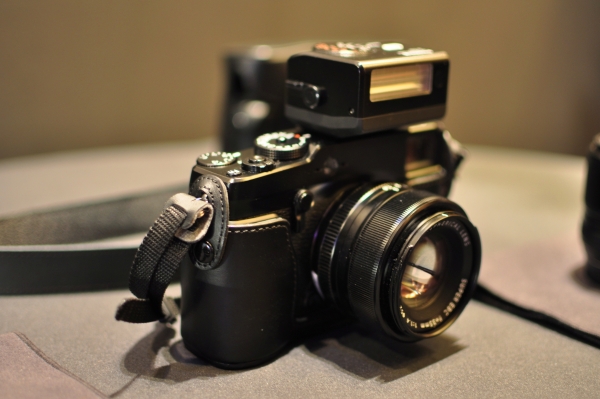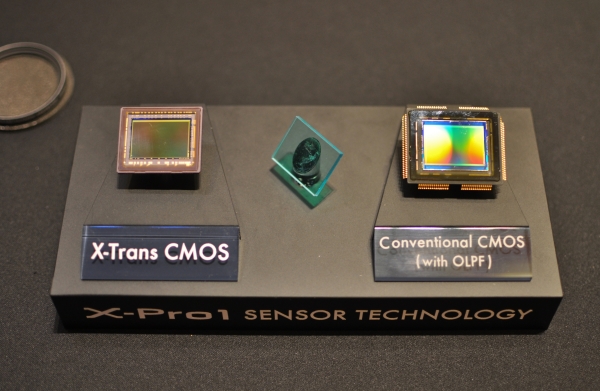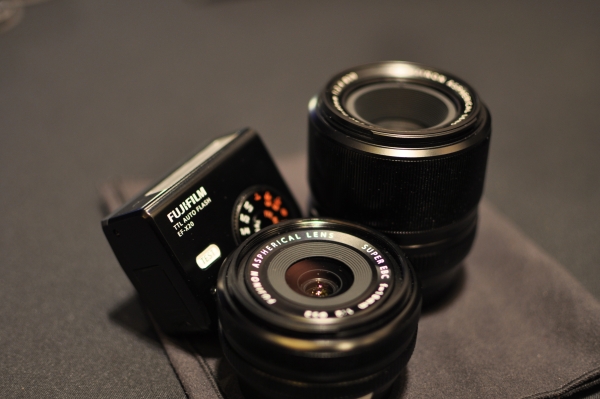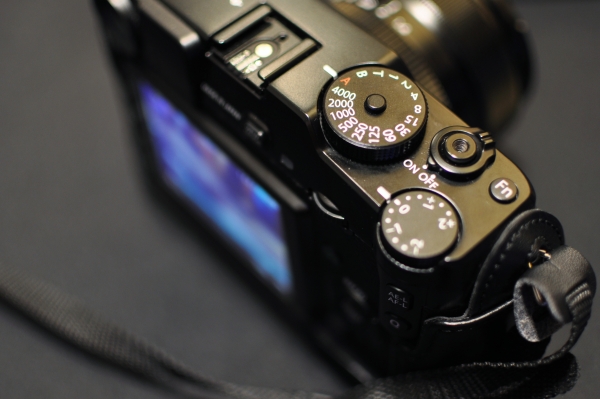
Fujifilm is experiencing a recent surge in popularity recently thanks to its excellent X100 advanced compact camera. This retro-licious model combines a beautiful rangefinder-style design, a DSLR-sized APS-C sensor, great lens and extensive manual controls for photography enthusiasts.
The company then followed up with the cheaper X10, which is modeled after its big brother but with the objective of capturing an even broader consumer market at roughly half the price of the X100.
Both cameras produced great images, but have high sticker prices equivalent to entry-level DSLRs. They targeted existing DSLR owners looking for a more portable alternative for casual shooting, and did pretty well in that respect.
With the just-launched X-Pro1, Fujifilm is riding this wave and jumping into the mirrorless interchangeable lens camera (ILC) category. And like the X100 and the X10 before it, the X-Pro1 is burdened by its enormous price tag even before reaching store shelves: the camera costs a whopping S$2,400 for its body only. Obviously, buying only the body is useless, so you’ll have to throw in at least another S$900 to get the basic lens.
Let’s take a look at the specs, which has quite a bit of new tech.

For the X-Pro1, Fujifilm has developed a new 16-megapixel CMOS sensor it calls the “X-Trans” CMOS, which the company claims to deliver resolution that is parallel, even superior, to a full frame sensor. To accomplish this, the sensor uses a different colour filter array with a higher degree of randomness than conventional sensors, and Fujifilm claims that this eliminates the need for a low-pass filter. This results in cleaner and sharper photos without moire and false colour.

Fujifilm also developed a new all-electronic lens mount called the X-mount to complement the new “X-Trans” sensor. The lack of a low-pass filter means that the rear lens elements can be mounted deeper within the body as close as possible to the sensor, reducing the back focus of each lens and achieving high resolution all the way to the edge of the image.

The most important part of ILCs is naturally the lenses. Fujifilm has prepared three new lenses to complement the X-Pro1: an 18mm f/2, a 35mm f/1.4, and a 60mm f/2.4 Macro. All three lenses have manual focus rings and a 1/3 step aperture ring for complete exposure control. Six more lenses, including zoom lenses, are on the road map and will hit the market from now to 2013.
In a throwback to the good old days, the X-Pro1 can also simulate the colour and tonal qualities of legendary film brands like the natural look of PROVIA, the saturated colours of Velvia or the soft looks of ASTIA.
All the other goodies of the X100 are also carried over, including all the dials and buttons to let photographers adjust settings manually to their hearts’ content. The camera has a solid magnesium alloy build, and is topped off by a hybrid viewfinder and a hot-shoe for accessories like an external flash.

But who exactly is Fujifilm trying to target at a price point north of S$3,000? Photographers and enthusiasts who already own a DSLR or two would probably rather spend the money upgrading their existing kit or buy more lenses. Beginners looking to pick up photography might prefer to spend half the price on a decent entry to mid-level DSLR.
If you’re shopping only for mirrorless ILCs, you can get the excellent Sony NEX-5N with two lenses at a much cheaper price! Plus, even top entry-level DSLRs like Nikon’s D5100 or Canon’s 600D cost much less.
Fujifilm representatives insist their new ILC is a premium product and claim to have all the engineering to back it up, and it’s not that outrageous a claim when I look at the stunning image quality the X-Pro1 is capable of producing. Nonetheless, I just cannot imagine myself plunking down the cash for it.
Are you going to snap the X-Pro1 up when it hits our shores in March? Share your thoughts in the comments!






I’ll be buying a Fuji X-Pro1 the second it comes out. What other camera that size offers image quality comparable (if not better) than a Canon 5DMII. Add extremely impressive high ISO performance and a lightweight and compact build and I’m sold. I was lucky enough to get my hands on one for an hour or so and I was very impressed.
Every other manufacturer is stuck with the Bayer sensor, first introduced in 1975. It consists of symmetrical row upon row of pixels and requires a low-pass or anti-moire filter between the lens and sensor, thus reducing resolution and introducing cross-pixel contamination in areas of high luminance. Fuji’s unique sensor has a quasi-random pixel array, closer to the random array of rods and cones in the human eye or silver halide crystals in film. It is the closest approximation to the analog nature of human vision or film without the graininess of film. I will wager the other digital camera manufacturers are working on their own versions of near-random sensor arrays, but for now Fujifilm is way out front. Yes, I have my order in for the camera and its three lenses.
-Fotogooroo
I will definitely buy it!
Not the Leica M8?
Wait and see approach for now. Some important lens are not in the line up so making it replace the x100 and my DSLR will be tough.
I guessing its targeting the folks who want to buy a Leica M series but can’t afford or not willing to buy to own one?
Like me. Fuji is going to release a Leica M adaptor in May. This is great since I have five Leica M lenses. And I will buy this camera as I am not so fond of SLRs. I learned the craft on a Leica. It is faster to focus than any AF anywhere. The Fuji will certainly not be as fast but it holds better than the bulky D-SLRs. I have ordered one. I’ll tell you how it goes.
That’s a good point. But it remains to be seen whether there’s a large enough pool of these sort of people for Fujifilm to profit from.